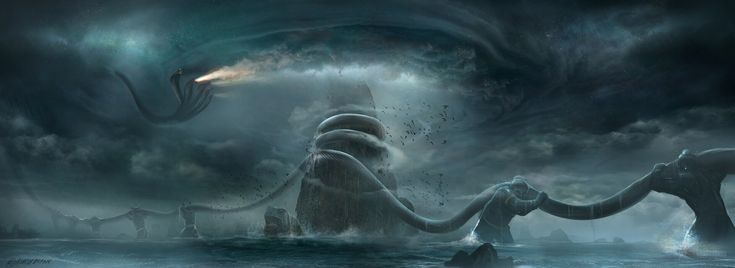Date: August 4, 2025
Part 8: About Mythology
Continued from Part 7
The art of symbolism has been used extensively in the area of mythology in Sanatana Dharma. Plato described myths as fictional stories that illustrated Truth. In other words, myths are an expression of some deeper truths through the medium of stories and vivid imagery. In his book Thou Art That – Transforming Religious Metaphor, Joseph Campbell, well known for his work of interpretation of mythology, writes,
“…although the word is popularly used to denote falsehood, myth is actually a perennial vehicle for expressing truth. Human beings have always been told, in mythic forms, the stories they want to be remembered and passed on – such as the Arthurian legends or the enduring Biblical tales – to distinguish them from fashions, fads, or the constantly changing facts of almanacs or the Guiness Book of World Records. Myth and symbol are fundamental and essential properties of all religions; they are the special language of religious experience.”
Why do we need a special language for religious experience? Because our ordinary language is a barrier. When we are attempting to describe Truth or Reality – language and description themselves become a barrier. Because language is a product of the mind and what we are trying to describe is beyond all mental concepts. It transcends the mind. We should understand that spiritual knowledge deals with the Reality behind the Appearances and that cannot be reduced to language. That is why all religions have used mythologies, symbols and metaphors to describe something which cannot be described.
Myths and folklore are not so much bound by the fixed moulds of logic. Rules of logic can be bent in mythology and that is why this medium has been used brilliantly in Sanatana Dharma to convey eternal truths. The difficulty of language has been bypassed by taking recourse to mythology. The myths and legends are not entertaining fairy tales, they always convey a deeper layer of meaning.
Mythology deals with the deep-seated motivations and impulsions of man. For instance, every man suffers from an instinctual fear of death. This was true for the primitive man and so is it true for the modern man today. That is why in all across the world we have legends on the recurring theme of the quest for immortality, eternal life or everlasting youth. Whether it is the Epic of Gilgamesh from the Mesopotamian civilization, or the quest for the Holy Grail in the Arthurian legends in Celtic mythology or the intense tapasya of various Asuras to gain invincibility in Hindu mythology – the same theme appears again and again: fear of death and quest for immortality.

At another level, mythology can also be viewed as a study in deep psychology. We should not be naïve enough to believe that psychology started with Sigmund Freud a hundred years back. The sages of our land who wrote the Ramayana and the Mahabharata, who wrote the Puranas, were psychologists par excellence. In the future blogs in this series, we shall see that the various characters of the Mahabharata and Ramayana are embodiments of various psychological “types”.
Every conceivable psychological trait was illustrated by those masters of deep psychology who invented those characters. For instance, if we want to describe a person having an extreme tamasic nature, instead of coming up with whole lot of definitions and traits we can simply utter the name Kumbhakarna and we immediately get the idea. Kumbhakarna is tamas personified whose whole life consisted of sleeping and eating.
Through the tellings and retellings of these myths and legends, deep spiritual truths, values and morality were conveyed across the generations. Education was differently formulated in those ages and storytelling was an essential ingredient of education and the learning process. In his book Myths and Symbols in Indian Art and Civilization, Heinrich Zimmer writes:
“The mythical tales are meant to convey the wisdom of the philosophers and to exhibit in a popular, pictorial form the experience or results of Yoga. Appealing directly to intuition and imagination, they are accessible to all as an interpretation of existence… The tale goes straight to the listener through an appeal to his intuition, to his creative imagination. It stirs and feeds the unconscious.
“By an eloquence rather of incident than of word, the mythology of India serves its function as the popular vehicle of the esoteric wisdom of yoga experience and of orthodox religion……Their details impress themselves on the memory, soak down, and shape the deeper stratifications of the psyche. When brooded upon, their significant episodes are capable of revealing various shades of meaning, according to the experiences and life-needs of the individual.”
We shall explore in the successive blogs, how mythology plays an important role in conveying deep spiritual truths through visual imagery and the power of the narrative. We shall focus on some of the symbols used in the Ramayana and Mahabharata.

